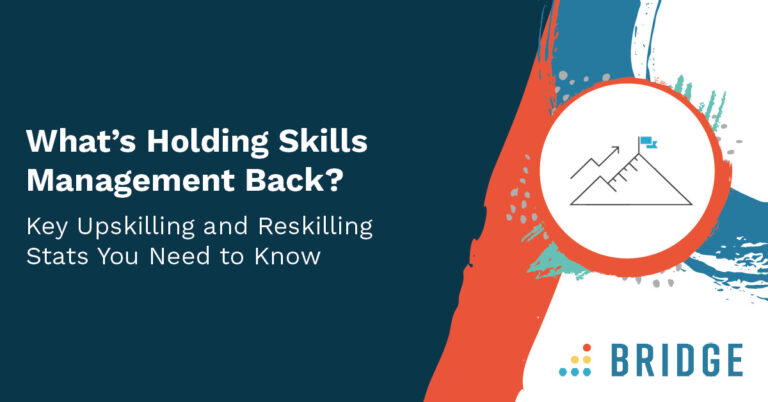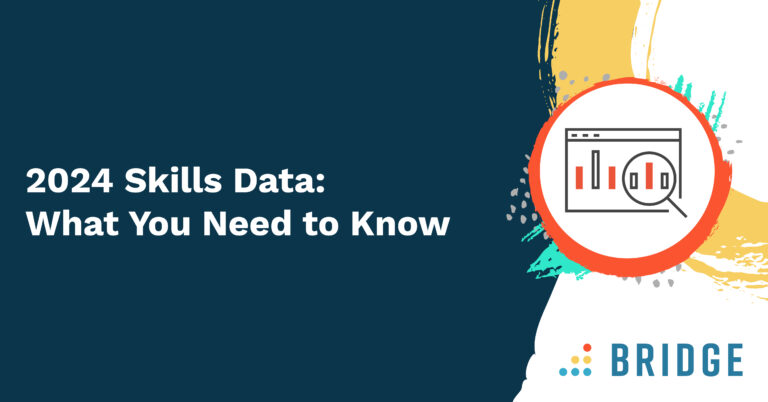Putting learning at the heart of your culture means investing in tools that go beyond basic and mandatory training to deliver deeply growth-oriented and personalized experiences. Because when employees feel like their organization is investing in their careers and giving them the skills they need to develop, everyone wins.
That’s why Bridge strives to make it as easy as possible for organizations to create a learning culture, develop people, and build skills.
Read on to see how Bridge’s platform ties learning and development together, enabling employees to identify the skills they need, and giving them the tools to develop.
How Bridge Brings Learning, Development, and Upskilling Together
Employee development is at the heart of the Bridge experience. Here are some features that bring L&D together within the platform.
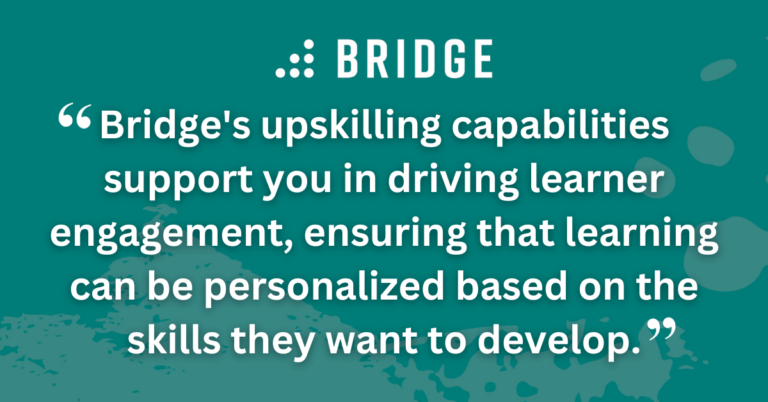
1) Content Creation and Management
Bridge’s award-winning learning management system includes everything you need to easily create, manage, and track learning and development programs in a single, easy-to-use platform.
Authors can create feature-rich learning experiences and deploy them in minutes with a choice of authoring tools or by integrating existing content. In addition, tying courses and programs to skills feedback and action-based checkpoints via automated learning pathways makes this learning measurable.
Bridge’s upskilling capabilities support you in driving learner engagement, ensuring that learning can be personalized based on the skills they want to develop. Using AI to scan content and autotag your library with in-demand skills keeps training relevant and helps your people connect with resources that resonate.
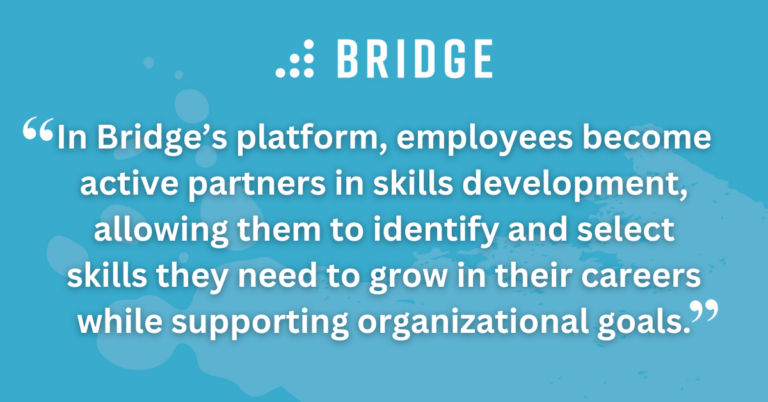
2) Personalized Skills Recommendations
The best learning experiences are meaningful for your people. In Bridge’s platform, employees become active partners in their development, allowing them to identify and select skills they need to grow in their careers while supporting organizational goals.
Using labor market data and AI automation, your people will get skills recommendations based on their job titles. Bridge then personalizes the learning experience by recommending courses to help employees learn those skills. Providing people with this level of personalization drives them to your content library.
Within the learning platform, employees can identify the skills they have, the skills they want to develop, and those they can help others with. This data facilitates knowledge sharing by allowing employees to form skills communities.
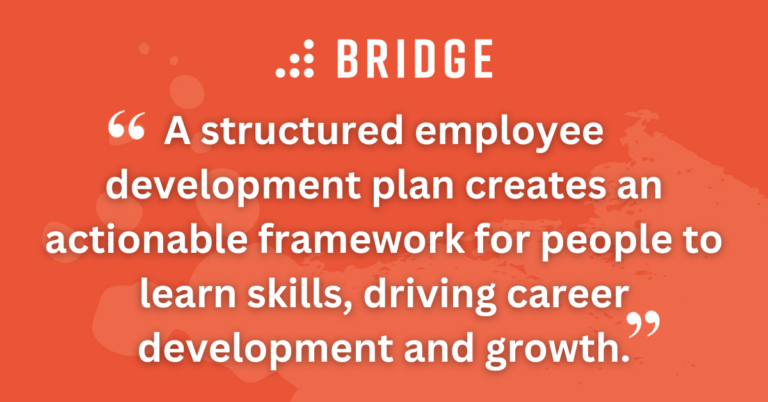
3) Employee Development Plans
A structured employee development plan creates an actionable framework for people to learn skills, driving career development and growth. Within Bridge, development plans facilitate ongoing conversations between employees and managers, drive accountability for learning, and map out a clear way forward for employees to reach their goals.
For managers, combining learning and development within one tool offers a tangible way to oversee progress and growth, making them a proactive partner in skills building. With access to feedback, learning outcomes, and skills gaps, they can steer your learners in their growth.
Together, managers and their teams can collaborate on the following items in Bridge:
- Creating a career development plan
- Enrolling in relevant learning
- Adding and amending tasks
- Monitoring and overseeing progress
We have managers, supervisors, and other University leaders reaching out to their teams and actively investing in the process now that it's being brought to their attention. That level of transparency wasn’t available in our previous system.
Temple University
READ TEMPLE UNIVERSITY’S SUCCESS STORY | ‘Proactive Skill Development: Sustaining a Legacy of Learning’
4) Continuous Feedback and Recognition
A continuous approach to feedback fuels employee growth, informs conversations, and helps employees be their best. Bridge’s built-in feedback and recognition features place learning in the broader context of growth and development, giving people the insight to reflect and improve.
At an organizational level, this feedback can inform your training programs by providing a well-rounded picture of your talent, their skills, and any existing or emerging gaps.
Learners or managers can orchestrate feedback requests at any time or as a step in a learning pathway. This means there’s no need to wait for an annual performance conversation for people to understand how they’re doing and where they can improve.
Learners can collect the following forms of feedback:
- Skills feedback: Helping employees and managers understand where there might be gaps.
- Stop/start/continue: Helping people understand what’s working and what isn’t.
In addition to structured feedback, Bridge provides a way for your people to celebrate each other’s successes and appreciate one another with peer recognition.
Bridge was like a breath of fresh air. We were working with other tools, but none of them were a combination of development, training, and feedback. Bridge is helpful because all of that is combined in one tool.
Adwise
SEE WHAT ADWISE ACHIEVED WITH BRIDGE | ‘Revolutionizing Employee Development and Performance to Achieve a 97% Staff Retention Rate’
Ready to See How Bridge Can Help?
For more information about Bridge’s learning, development, and upskilling capabilities, check out our self-guided walkthrough or request a demo.


